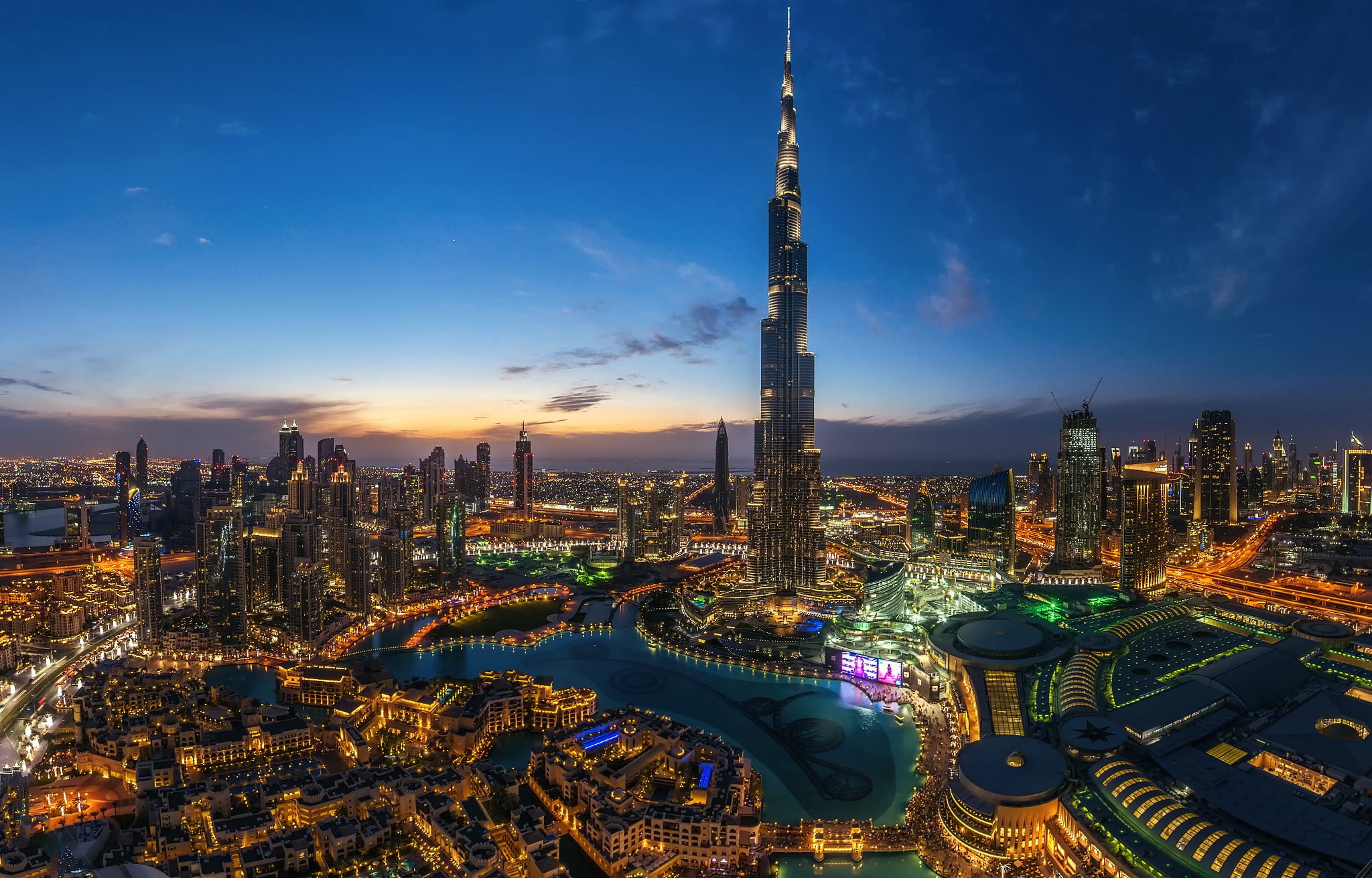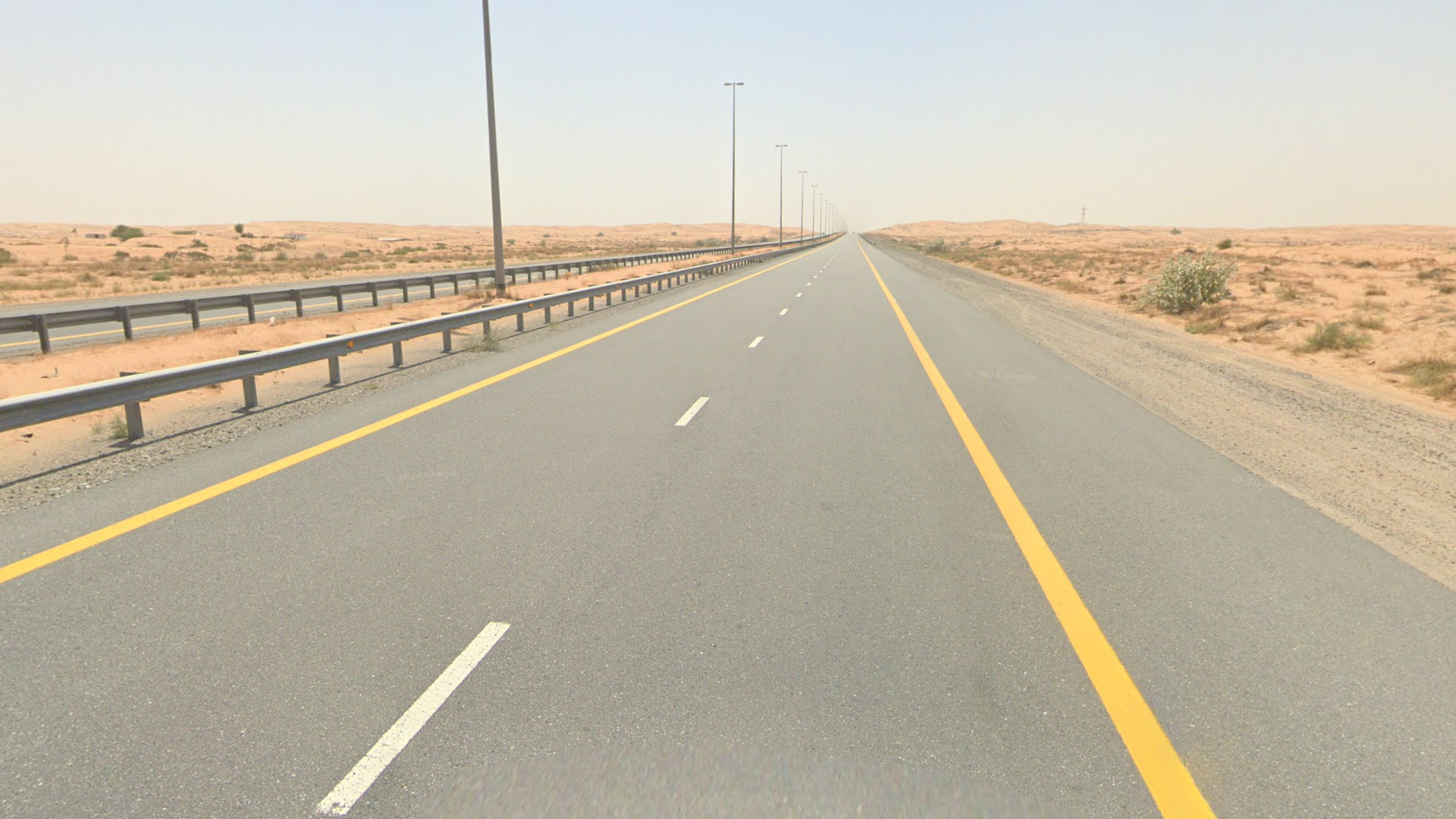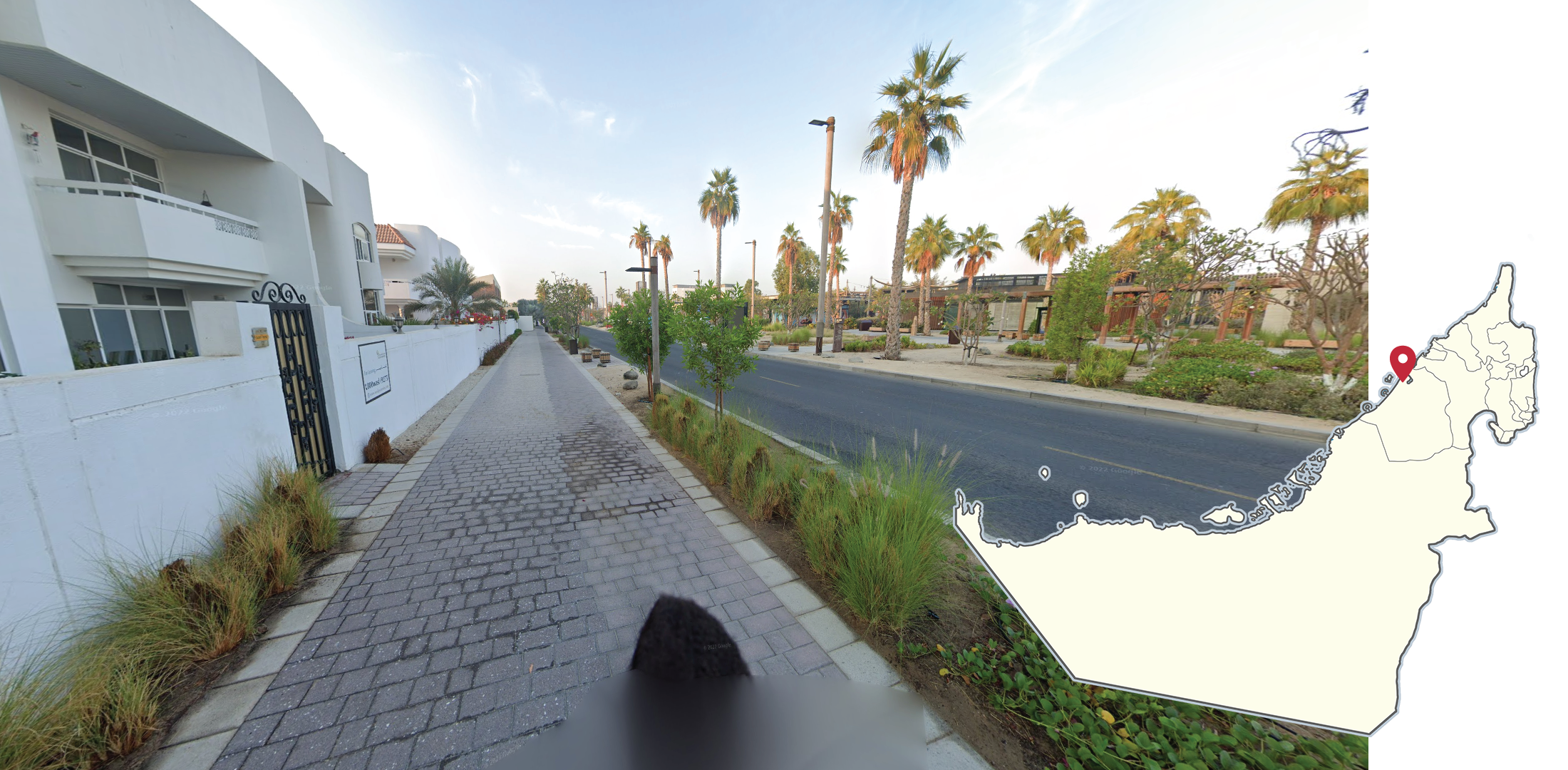
United Arab Emirates
In Generation 4 coverage, a white pickup truck with a trekker camera was used for much of the coverage. In a lot of the coverage, the truck is completely blurred out.
NOTE: A similar truck can be found in Qatar and Oman. In the UAE the antenna at the front of the cabin is on the middle of the car, while in Qatar it is on the left.
You can also find regular Generation 4 coverage taken with a black car. The brake light is commonly visible.
NOTE: A similar Generation 4 black car can be found in Israel.
Electricity poles in the UAE are mostly made of dark brown wood. The pole tops consist of three insulators, symmetrically attached to a horizontal metal bar.
NOTE: Similar poletops can be found in Oman. Jordanian poletops may look similar, but they are usually made of grey concrete, and the insulators are more spaced out.
In some parts of Dubai, including the old town, a Generation 4 sidewalk trekker was used. Sometimes, the employee’s black hair is visible.
The city of Al Ain has several trekkers, far away from the area with car coverage: two forts (Qasr Al Muwaiji and Al Jahili) and a zoo.

























